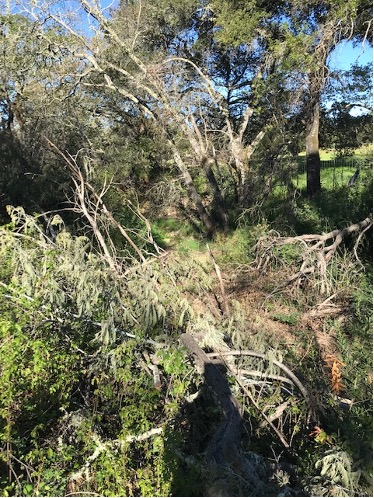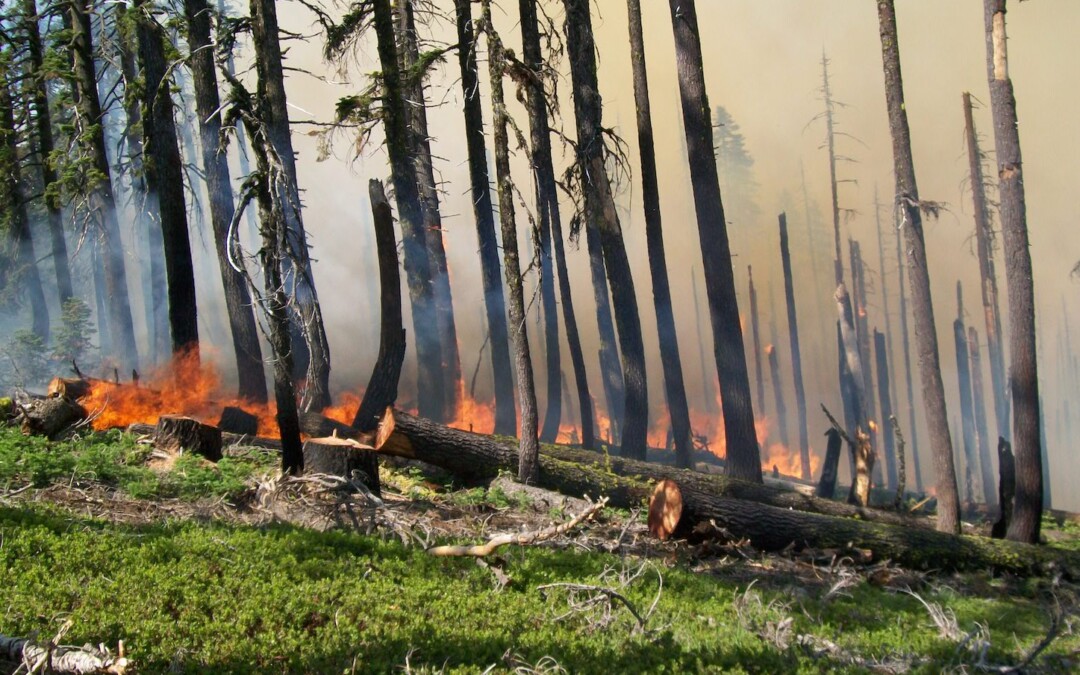Creeks in some settings act as barriers to wildfires, with flowing water, moist soils, and shady groves of trees. However, riparian (creekside) vegetation can also provide an avenue for rapid spread of fires owing to dense vegetation, infestations of invasive flammable shrubs and trees, and accumulations of dead wood resulting from years of drought and disease.

Map of recent wildfires in the Sonoma Valley area.
In the Sonoma Valley and surrounding areas, large wildfires swept over mountains and through forests, vineyards, and neighborhoods in 2017 and 2020. The fires swept across and along riparian corridors. Even streams as large as the Napa River and Sonoma Creek were ineffective in slowing the wind-driven fires. In cultivated and residential areas, the thick vegetation along streams provides routes for fires to spread.
Riparian corridors following wildfires have reduced canopy cover, less shade, higher water temperatures, and large concentrations of dead and down and dead standing trees.
They are often overgrown with rapid infestations of invasive plants such as acacia, Himalayan blackberry, and French broom. These non-native plants exclude the regrowth of native plants, provide suboptimal wildlife habitat, and consume groundwater, reducing summer streamflows.
Owing to the effects of invasive plants, climate change, and reduced shade, riparian corridors may not rebound after fires and return to their pre-fire conditions. In such cases, post-fire riparian corridor restoration can be crucial in starting creeks on the road to recovery and reducing fire threats for the future.
Post-fire restoration in creekside areas includes removal of excess dead wood, eradication of invasive shrubs and trees, control of accelerated erosion, and replanting with native trees and shrubs adapted to post-fire conditions. The Sonoma Ecology Center (SEC) Restoration Program is experienced in post-fire riparian restoration, with several recent projects successfully completed. Our native plant nursery in Sonoma grows native riparian trees and shrubs from seeds collected locally. Our technicians are trained to identify and protect native plants while removing fire-killed trees and brush, eliminating invasive species, controlling erosion, and planting native vegetation. Our crews include staff certified as natural resource professionals, pesticide applicators, firefighters, and erosion control specialists.
Activities in riparian zones, including post-fire restoration, are regulated by several federal, state, and local agencies, and obtaining the necessary permits can be challenging. The SEC has experience in applying for the requisite permits and has a biological research staff to evaluate project areas for the presence of species of concern. All of our work is done in compliance with relevant laws and regulations.
“…riparian areas may accumulate fuels rapidly owing to their high productivity, and during dry fire seasons they can serve as wicks that carry high-intensity fire through a landscape.”
—Carolyn Hunsaker, PhD, and Jonathan Long, PhD, USDA Forest Service, 2014
“Fires often follow creeks and other riparian areas into the vineyard and damage adjacent vines…”
—Glen McCourty, University of California Cooperative Extension, 2021
“Fire can move along areas of dense vegetation and may be a source of ignition in developed areas. Risk is highest near WUI, ember cast zone and riparian corridors.”
—Cyndi Foreman, Sonoma County Fire Department and Sandi Potter, Windsor Public Works Department, 2020
“Due to higher levels of moisture, riparian areas next to streams and rivers can disrupt the spread of fire within a landscape and often burn at lower severity. However, in the absence of periodic fire, riparian areas may accumulate fuels rapidly due to their high productivity, leaving them vulnerable to high-intensity fire during dry fire seasons.”
—Carolyn Hunsaker, PhD, USDA Forest Service, 2014
“…a century of fire suppression has led to denser forests with an abundance of ladder fuels, particularly in productive riparian forests where water is not limited.
—Malcolm North, PhD, USDA Forest Service, 2012
“Vegetated open creek channels can be a pathway and provide fuel during wildland fires.”
—Town of Windsor Riparian Corridor Wildfire Fuel Management Plan, 2019
If you are concerned about wildfire risks along a creek near your property, please contact our Restoration Team at restoration@sonomaecologycenter.org or call 707-996-0712 ext. 116.
“The Sonoma Ecology Center (“SEC”) did a great job clearing dead manzanita and French broom on our property, reducing wildfire risk and improving the health of our forest. The crews were hard working and cheerful. The team was also respectful of my concerns and priorities and were able to make adjustments to the work plan when needed. I hope to work with the SEC for years in the future.”
—David Cost, Landowner and SEC client, Glen Ellen, 2022
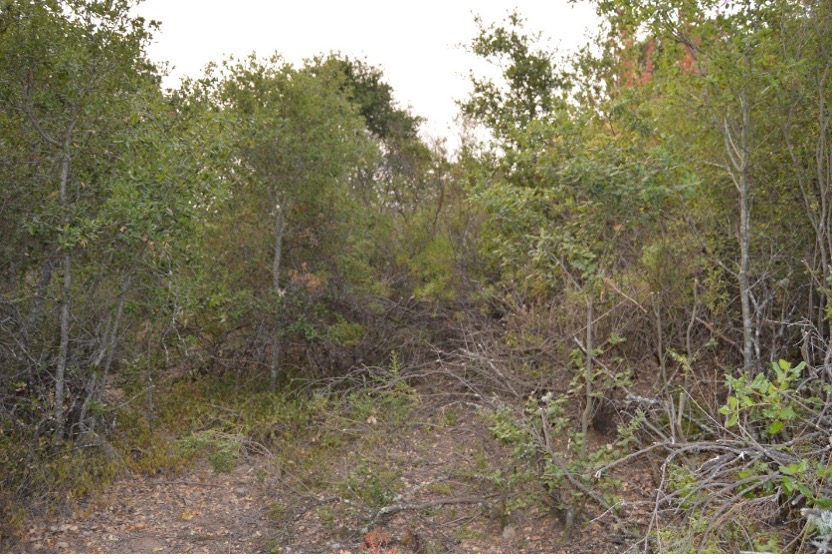
Riparian corridor before Sonoma Ecology Center fuels treatment
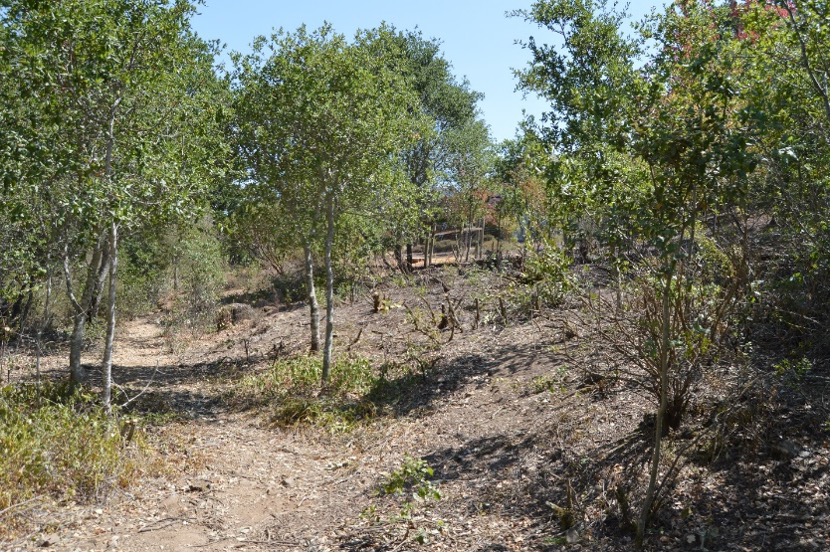
Riparian corridor after SEC fuels treatment

Accumulation of dead and down trees along a creek after the 2017 Nuns Fire near Annadel State Park
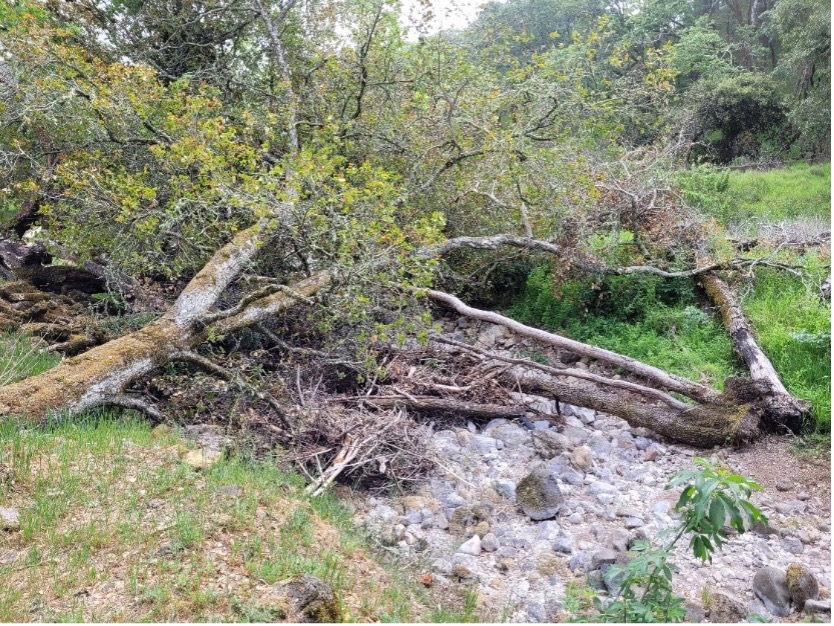
Downed trees blocking a small tributary after the 2017 fires
